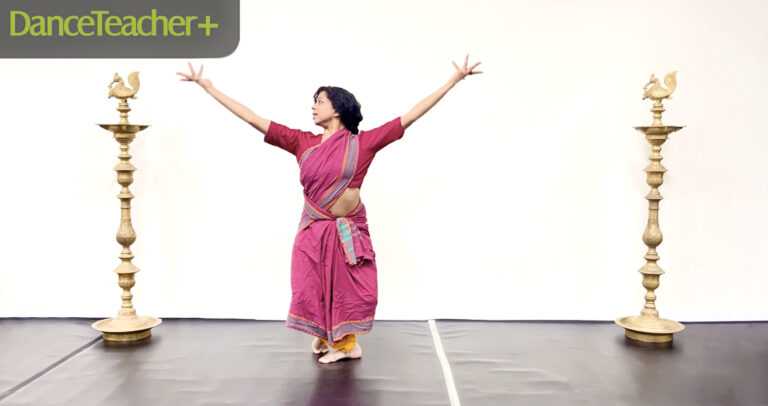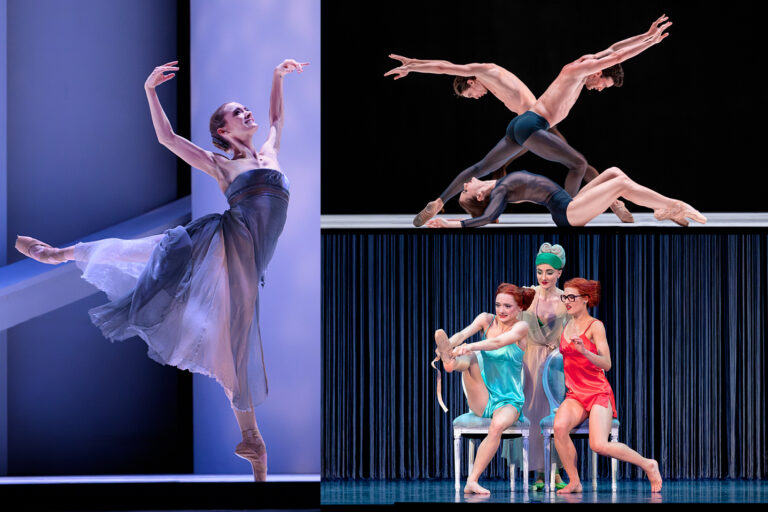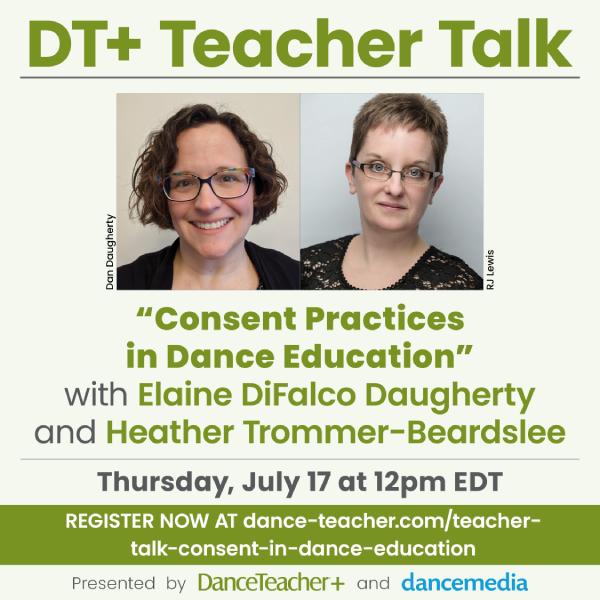
Imagine you’re attending a dance performance in progress, but the primary sensory feedback you receive is the sound of the musical score. You can’t see what’s happening onstage because you are blind or partially sighted. It’s nearly impossible to figure out what’s going on.
Now imagine those same circumstances, but this time you also hear descriptions of the movements, dancers, patterns and other visual content. This is likely to be the more enriching experience. This assistive technology, called audio description (AD), fills in the visual elements integral for comprehension and enjoyment for those who are blind or partially sighted.
The same applies to the classroom and studio setting: Dance educators can incorporate succinct and vivid, pedagogically focused descriptions—whether the class is virtual or in-person—to welcome student populations that have been excluded from traditional dance classes due to vision loss. And regardless of whether individual students learn best kinetically, auditorily or visually, AD can offer pathways for more nuanced understanding and a more expansive learning experience for all students.
In a recent webinar hosted by Access Dance Festival, veteran audio describer Diane Englert offered dance educators who are getting started with AD clear, actionable strategies for making dance classes more accessible and inclusive.
The basics of audio description
Most dance educators already use language to describe movement during class. So what makes audio description and access-focused language different?
For one, it may feel like you’re talking a bit more than you’re used to. Whether in in-person or virtual classes, begin by introducing yourself, with your name and pronouns. Include details of physical appearance, such as face shape, hair and eye color, and complexion, in addition to clothing and accessories. (If this is a continuing class, as opposed to a drop-in, you can just describe yourself in the initial session.) Feel free to offer colors, as many AD users do have a prior knowledge base. Include a description of your background for virtual classes, and for in-person classes, be sure to describe any environmental factors, like bathrooms and water fountains, and safety hazards, like poles and cords. A strong practice for communications is to ensure that any information written on signage or posters is also repeated verbally as an announcement.
When it comes to describing the movement itself, your usage of codified terminology may vary with regard to the level of the students. The formal names of ballet steps, for example, may be appropriate for intermediate to advanced dancers, whereas beginners may be more effectively served by descriptions of how or where to move. When describing, be sure to include the name of the step, if it has one, the geometric shape, angle and direction of the movement, the movement quality, and what the dancers should be doing with their faces and hands.
With practice, your descriptions will become tighter, as you learn what can be omitted and as you develop a shared language with your students.
What makes for strong audio description
When in doubt, Englert suggests referring to the acronym “OVALS”:
O: observant, discriminates between relevant and irrelevant details
V: vocally prepared
A: accurately chooses evocative, nonjudgmental verbs and adjectives
L: listens well for rhythm and timing
S: succinctly delivers information
When to use AD
Even if you don’t have students in class who you know to be blind or partially sighted, it’s still a good idea to incorporate audio description. Englert compares this to how it’s become best practice to ask for pronouns or other inclusive language. “Then you won’t make a mistake if you just didn’t know someone with limited vision was in class, and it shows others that you embrace access and inclusion,” she says.
How to practice
Throughout the webinar, Englert offered exercises to practice integrating audio description. In one, participants were asked to brainstorm descriptive synonyms for a common verb. The group came up with at least 40 for “walk” in a matter of minutes.
In another, participants practiced describing simple movements. Imagery, shape and location were particularly useful; cues for the choreography of “circle your arms” were aided by supplemental images like “the paddlewheel of a boat” or “a hula hoop on each arm.” “Even dancers who can see will take in nuances from the teacher’s verbal description that they may not have noticed,” Englert said. “If teachers also describe movement in terms of the physiology, muscularity, focus, breath, then the work goes deeper for everyone.”
You can also practice on your own using photographs and videos as source material, or give yourself challenges, like teaching a whole class without demonstrating or doing the moves at all, or imagining that none of your students can see each other. It’s easy to take for granted just how much sighted people rely on their vision, whether to teach a step, demonstrate, offer corrections, or learn by example from the teacher or other students.
For teachers who want to dive deeper, Englert offers introductory and intensive audio-description training workshops.
Get everyone involved
The more people incorporating audio description techniques in the studio, the better!
At the beginning of class, teachers can invite students to describe themselves—especially those students who may be coming into contact with the AD user, whether in partnering, floorwork or choreography.
Teachers can also try pairing a sighted dancer with a dancer who has low vision and having the low-vision dancer stand behind their partner, to better see the movement. Or, when social distancing is not of concern and consent has been given by both parties, you can invite a dancer who is blind to touch the body of the sighted dancer in order to learn choreography. Adding tactile experience to the verbal description can help the dancer to feel what they cannot see.





